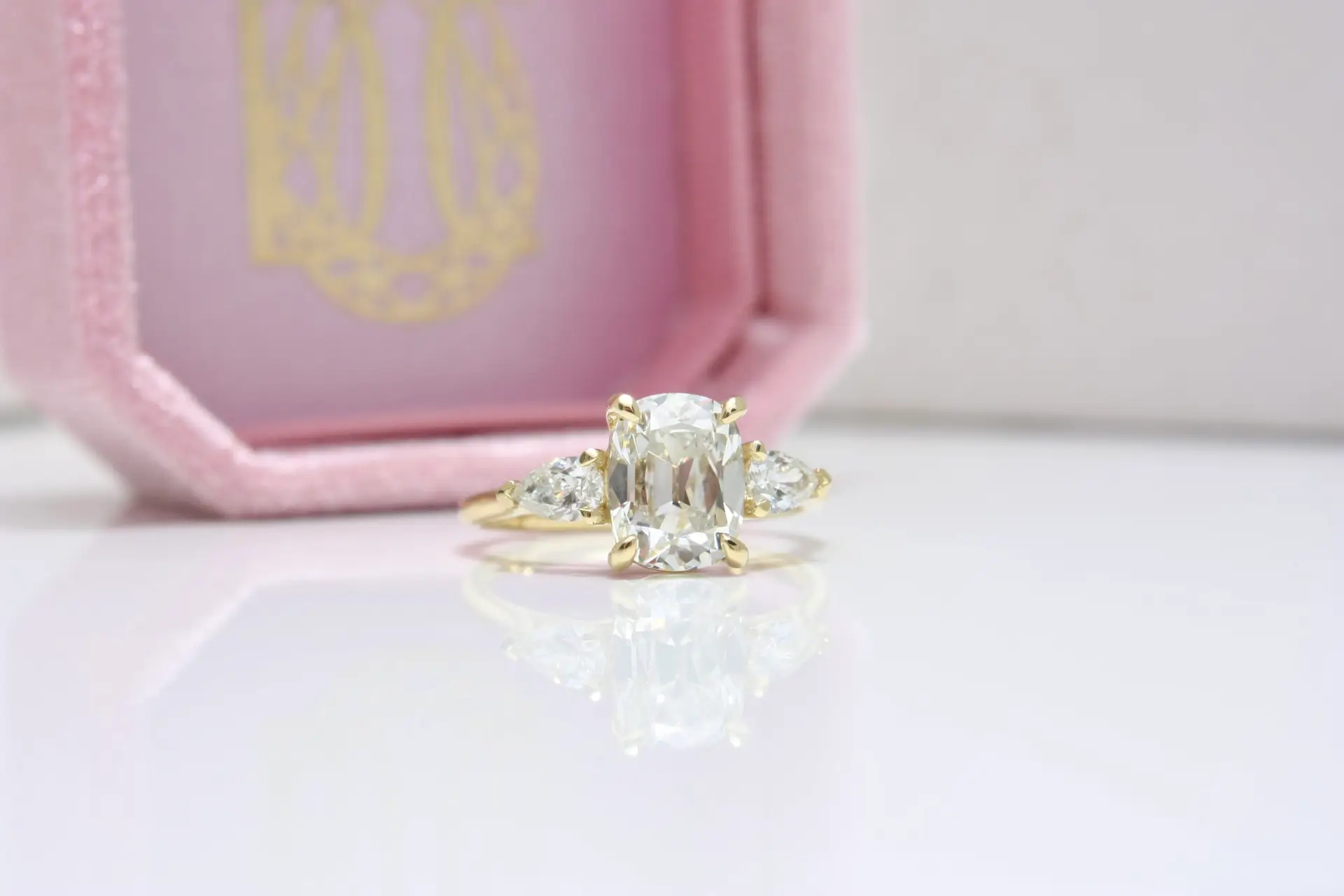

Perhaps the most iconic diamond cut from the early 18th to the late 19th century, the Antique Cut Diamond evokes an era in history when diamonds were measured by the eye and shaped entirely by hand.
Unlike modern cut diamonds, which use scientific principles and advanced technology, such as lasers and 3D mapping, to maximise a diamond’s sparkle and brilliance, antique cut diamonds were cut using traditional hand-cutting methods and techniques popular before modern cutting standards emerged, producing unique stones with larger facets, higher crowns, and smaller tables. Designed to glow under candlelight with their soft, warm radiance, antique diamonds carry a timeless romance, celebrating individuality, history, and sustainable luxury.
Listed below are popular antique cut diamond styles;
Old Mine Cut: A precursor to the round brilliant, this cut has a squarish shape, a high crown, and a large culet, and was prevalent before the late 1800s.
Old European Cut: An earlier version of the round brilliant, it shares similar characteristics but has a less perfected form and a more prominent culet than modern cuts.
Rose cut: A simpler cut with triangular facets arranged in a dome-like shape, creating a more subtle sparkle.

What to Look for in Antique Cut Diamonds
2. Expect to see a different contrast pattern (the pattern of white and dark areas caused by reflections within the diamond), as compared to modern diamond cuts.
3. Expect to see a difference in fire (breaking of light into spectral or rainbow colours): since the facets are larger, you should notice larger, more striking patches of colour (particularly under spotlighting).
4. Because original older cuts may have exceptionally thin girdles, be sure that the girdle is fully protected all the way around the diamond, leaving no edge exposed.
Read more on Rose Cut diamonds and their enduring charm.
Information credit: GIA

Our workshop is now officially closed for engagement ring orders and bespoke jewellery for December delivery. We will reopen in mid-January 2026 to craft new engagement rings and made-to-order jewellery.
For those seeking the perfect Christmas gift, our Ready-to-Wear jewellery collection is elegantly curated and available for immediate purchase.